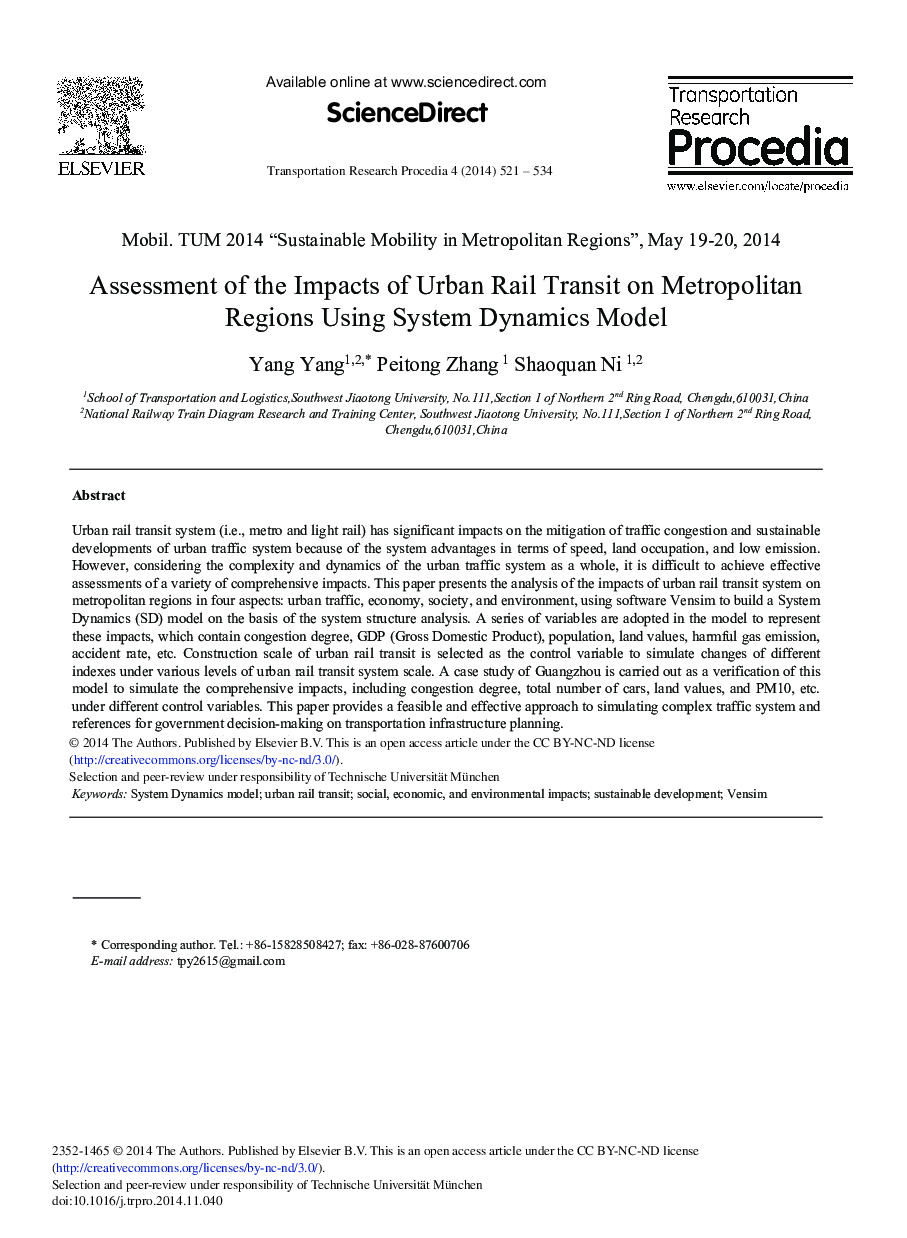| Article ID | Journal | Published Year | Pages | File Type |
|---|---|---|---|---|
| 1106349 | Transportation Research Procedia | 2014 | 14 Pages |
Urban rail transit system (i.e., metro and light rail) has significant impacts on the mitigation of traffic congestion and sustainable developments of urban traffic system because of the system advantages in terms of speed, land occupation, and low emission. However, considering the complexity and dynamics of the urban traffic system as a whole, it is difficult to achieve effective assessments of a variety of comprehensive impacts. This paper presents the analysis of the impacts of urban rail transit system on metropolitan regions in four aspects: urban traffic, economy, society, and environment, using software Vensim to build a System Dynamics (SD) model on the basis of the system structure analysis. A series of variables are adopted in the model to represent these impacts, which contain congestion degree, GDP (Gross Domestic Product), population, land values, harmful gas emission, accident rate, etc. Construction scale of urban rail transit is selected as the control variable to simulate changes of different indexes under various levels of urban rail transit system scale. A case study of Guangzhou is carried out as a verification of this model to simulate the comprehensive impacts, including congestion degree, total number of cars, land values, and PM10, etc. under different control variables. This paper provides a feasible and effective approach to simulating complex traffic system and references for government decision-making on transportation infrastructure planning.
